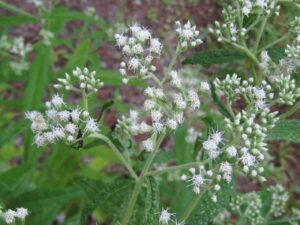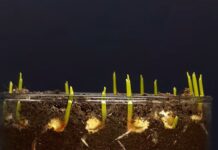
Introduction to Growing Medicinal Plants Hydroponically
Increasingly, medicinal plants are cultivated on a commercial scale to meet the great demand for many natural remedies. Such organisms are grown in an open field, resulting in great year-to-year variation in both the production of biomass and the quality of active principles. Hydroponic technology can be used to produce high-standard plant material all year round, taking into account the possibility of controlling growing conditions and stimulating secondary metabolism by appropriate mineral nutrition manipulation. You are struck by the pace of growth and the vigor of your plants when you start a hydroponic system with the right nutrients; not to mention the profusion and generosity of your plants.
The hydroponics system is simply soilless plants growing in water. In commercial settings, liquid nutrients are used primarily for growing plants in this form. The main advantages of system hydroponics are as follows;
- More crop yield can be obtained as compared with conventional farming practices
- It can be avoided the use of industrial pesticides and even fertilizers
- Soil-borne diseases can be eliminated
- It is possible to obtain comparatively safer and fresher items
- Water scarcity can be overcome
- No need for a larger growing area than conventional practice and Plants can get a
- sufficient supply of air, water, and nutrients.
With the cultivation of medicinal herbs, the hydroponics method may do some miracles. There are various types of hydroponic systems available commercially in markets and they are basic wick method, water culture, ebb, and flow system, drip system, Nutrient Film Technique (NFT), and aeroponic system.
Guide to growing medicinal plants Hydroponically
This is a step-by-step guide to the creation of a very simple and extremely effective hydroponic garden system for medicinal plant growth.
Seeding – The seed mix consists of a mixture of the following coconut coir, coconut peat, cotton, micro, and macronutrients required to grow and trace compost amounts to nourish plant production. It should be watered constantly to prevent from drying. When the plants reached a certain height it must be moved to the hydroponic system. Typically, it takes for around 10 to 15 days for a plant to grow to the required size.
Hydroponic setup – Hydroponics system consists of a 2-hole rectangular tank to which the water and nutrient solution is poured in. At the top are the plants hanging from buckets. The baskets are supplied with large pores for touching the solution to the plant roots. They are loaded up with some form of support. The holes are provided through which the air pump is externally connected for aeration, and the plant’s roots are dipped into the solution so they get the nutrients for growth.
Growing medium medicinal plants hydroponically
The growing medium for hydroponic gardening is an inert medium which gives the plant no nutrients. This just provides the grown-in foundation for the plant roots.
Coco coir fiber, Rockwool, Perlite, Vermiculite, LECA, Expanded clay, Crushed granite, Sand, Scoria, Gravel are the various forms of hydroponic growing mediums.
In a hydroponic system, a growing medium allows us to add the correct amount of nutrients and also monitor the pH level. There are also many advantages to using a growing medium other than soil that includes;
- Prevention of root infestations,
- Retention of adequate oxygen and water and
- Increased aeration and draining.
Temperature – High temperatures tend to accelerate the growth of the plant which increases the water requirement of the plant. High temperatures increase the plant’s water consumption to cool down by evaporating itself.
Shelter and support – Shelter for the hydroponic method depend upon the type of cultivation to be carried out. A large area is required for the commercial production of the medicinal plants. Depending on the type of plant grown, support arrangements may be made which can aid in the increased yield.
Water – All water suitable for drinking or for irrigating greenhouses is, as a general rule, ideal for the hydroponic system. To be more precise, water suitable for hydroponics has less than 500 uS/cm of conductivity, or a total salt concentration of less than 350 ppm. In some areas, noxious amounts of sodium and boron can cause problems. Very soft water should be used with nutrients which include calcium.
Some of the medicinal plants that can be grown hydroponically
Growing Aloe Vera medicinal plants hydroponically

Growing Hops medicinal plants hydroponically
These types of plants have been known to help with digestion as with any hydroponic system, indoor crop, pest occurrence, and disease decrease as you have more control over the growing environment. Hops prefer temperatures between 5 and 23 ° C because when growing in a regulated setting it is often easier to sustain a longer growing season.
Growing Rosemary medicinal plants hydroponically

Growing Saffron medicinal plants hydroponically

Growing Garlic medicinal plants hydroponically

Growing Parsley medicinal plants hydroponically

Growing Lemongrass medicinal plants hydroponically
This exotic herb is a bit successful in the treatment of some conditions. Some people claim it can be useful as a pain reliever. In the hydroponics method, the benefit of growing Lemongrass is that the process is safe, with faster growth and edible roots. Whereas when grown in soil, plant roots are always cut off; the entire plant roots can be consumed.
Hydroponics for the Cultivation of Medicinal Herbs
vitamins, enzymes, and oils, among others. These phytochemicals can be used in many industries including the food industry, for functional development or enriched foods, the health industry for medicines and pharmaceuticals, and the textile industry, among others
The seeds were planted in the seed mix for marigold and siriyanangai. The stem was planted within the seed mix for karisalankanni. In the hydroponics system, the karisalankanni and siriyanangai were growth. The marigold plant does not fit for hydroponics.
Final Thoughts
Hydroponics has many advantages but it shows certain disadvantages as chemicals used. So we developed the hydroponics as a natural way without chemicals being artificially synthesized. We designed a hydroponics system with natural means such as Vermicompost extract, Extracting vegetable waste, Both Panchakavya and Cattle shed extract from the soil. Before the plants were growing in hydroponics solution, they were processed by seeding to optimize their growth for further process. Among these natural media, cattle shed soil extract and vermicompost extract show positive results for Eclipta prostrata. The plant Calendula officinalis is not suitable for the hydroponics setup. The plant Andrographis spaniculata showed less growth. From our observation, we conclude that the cattle shed soil extract has been used for the hydroponics method instead of chemical media.
Also, See Hydroponic Farming Information Guide | Agriculture Goods






